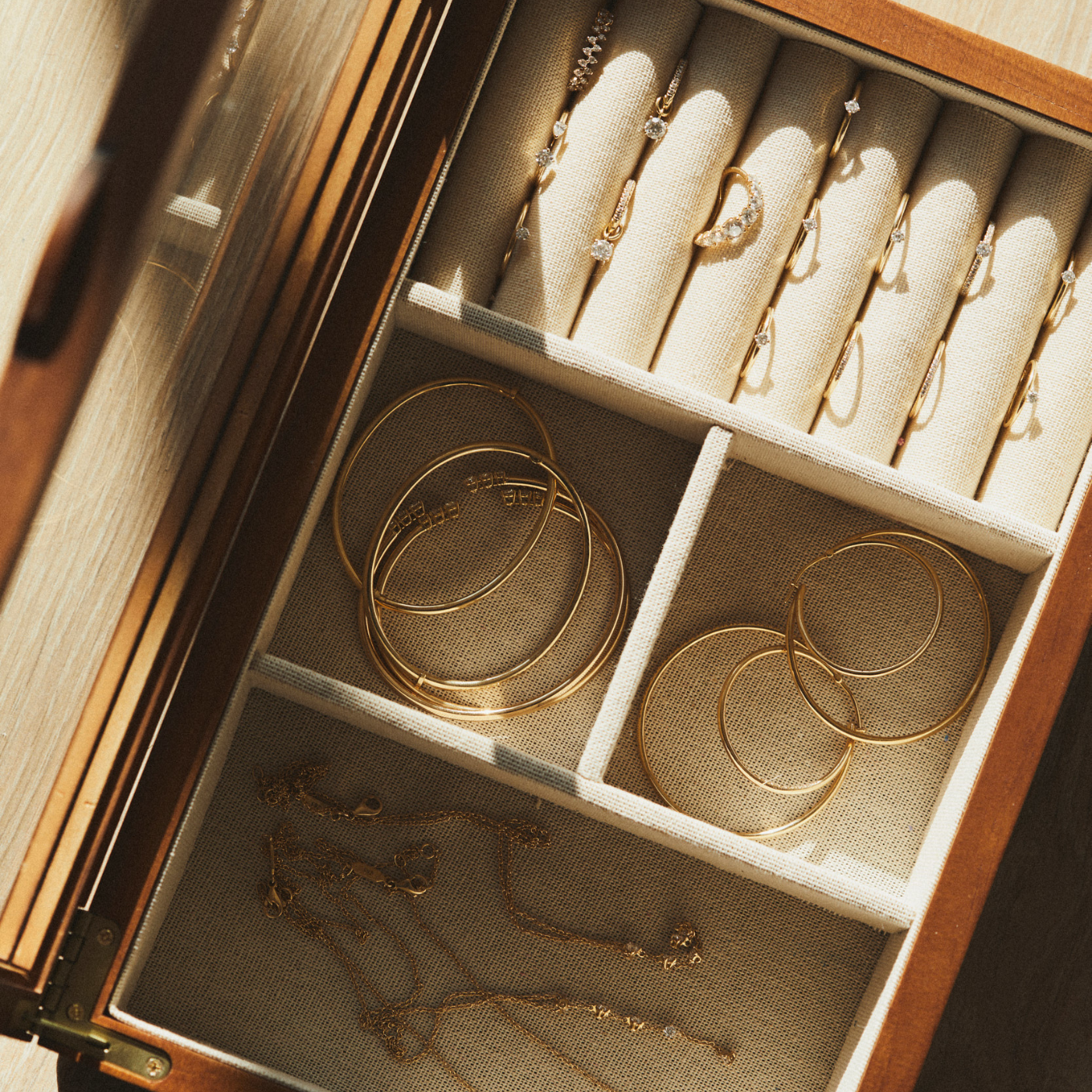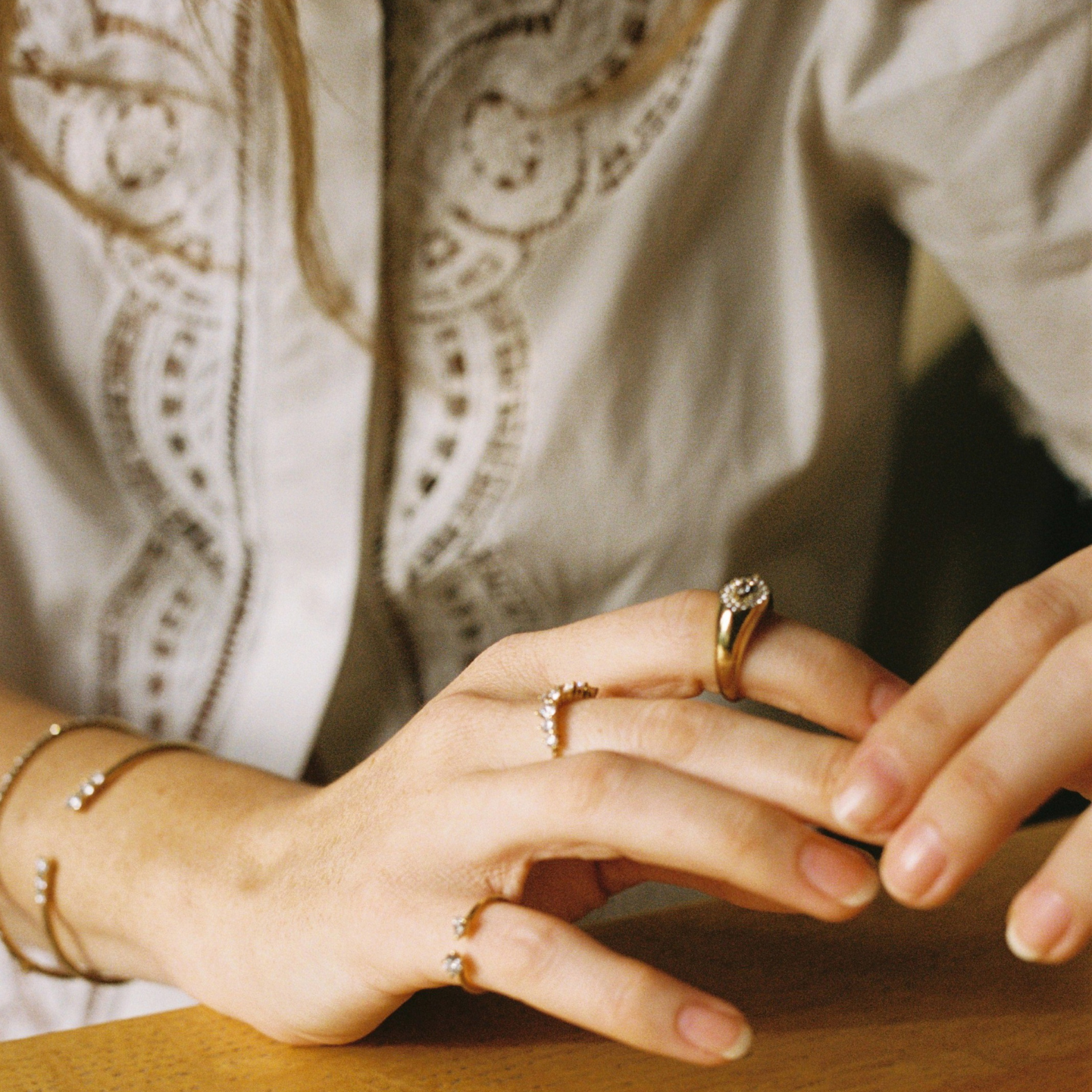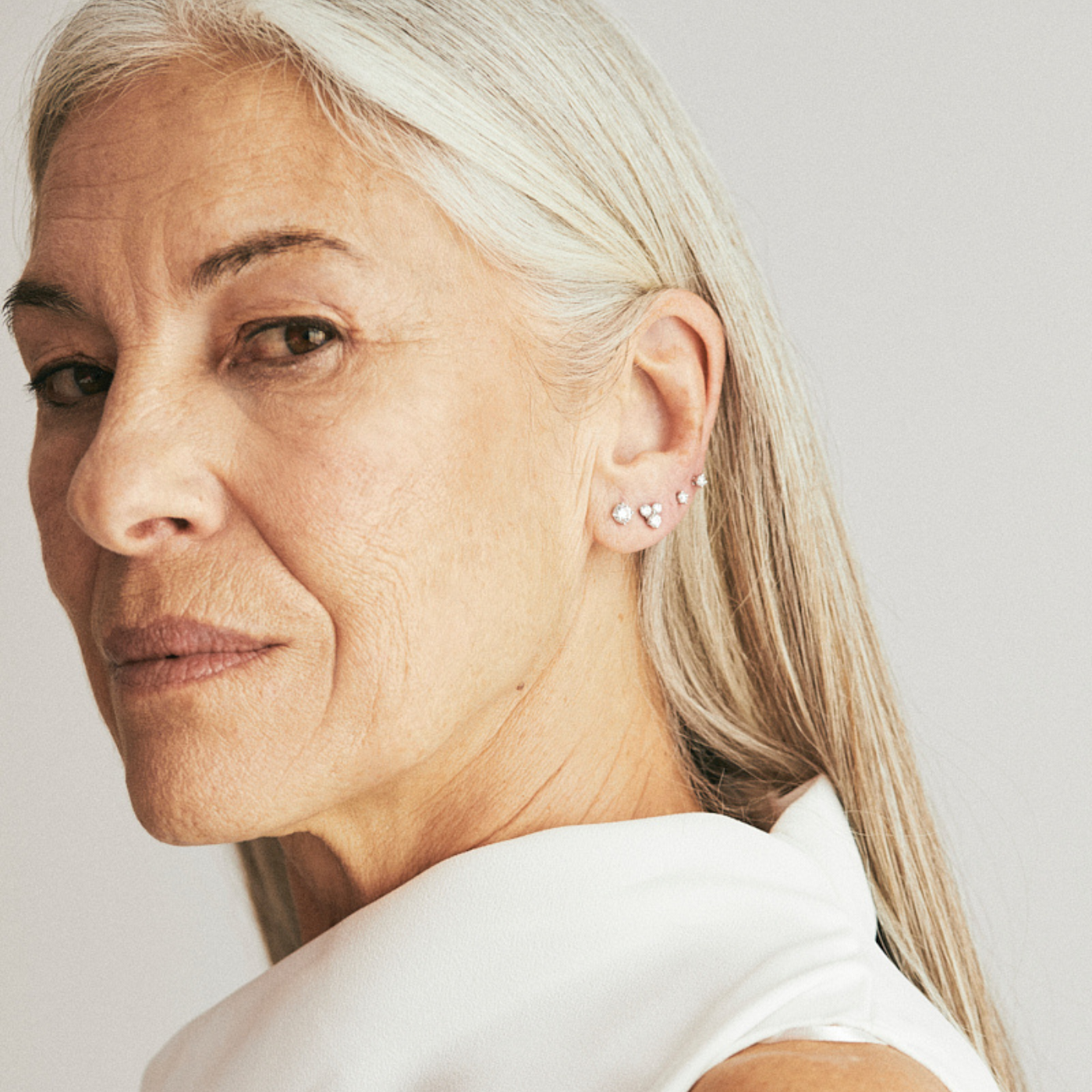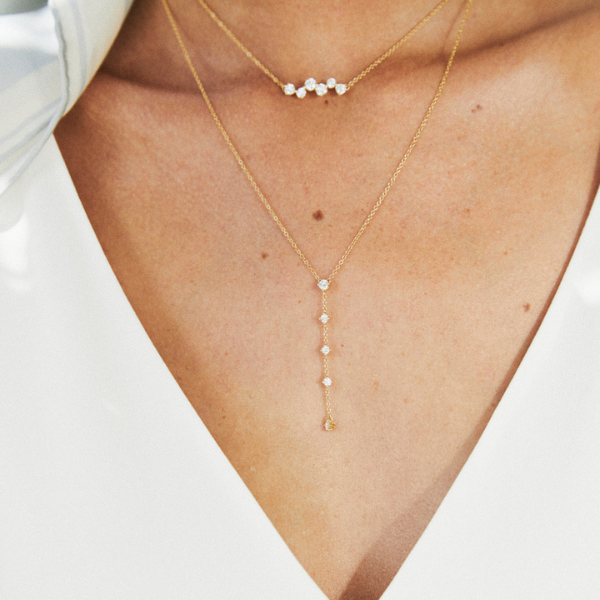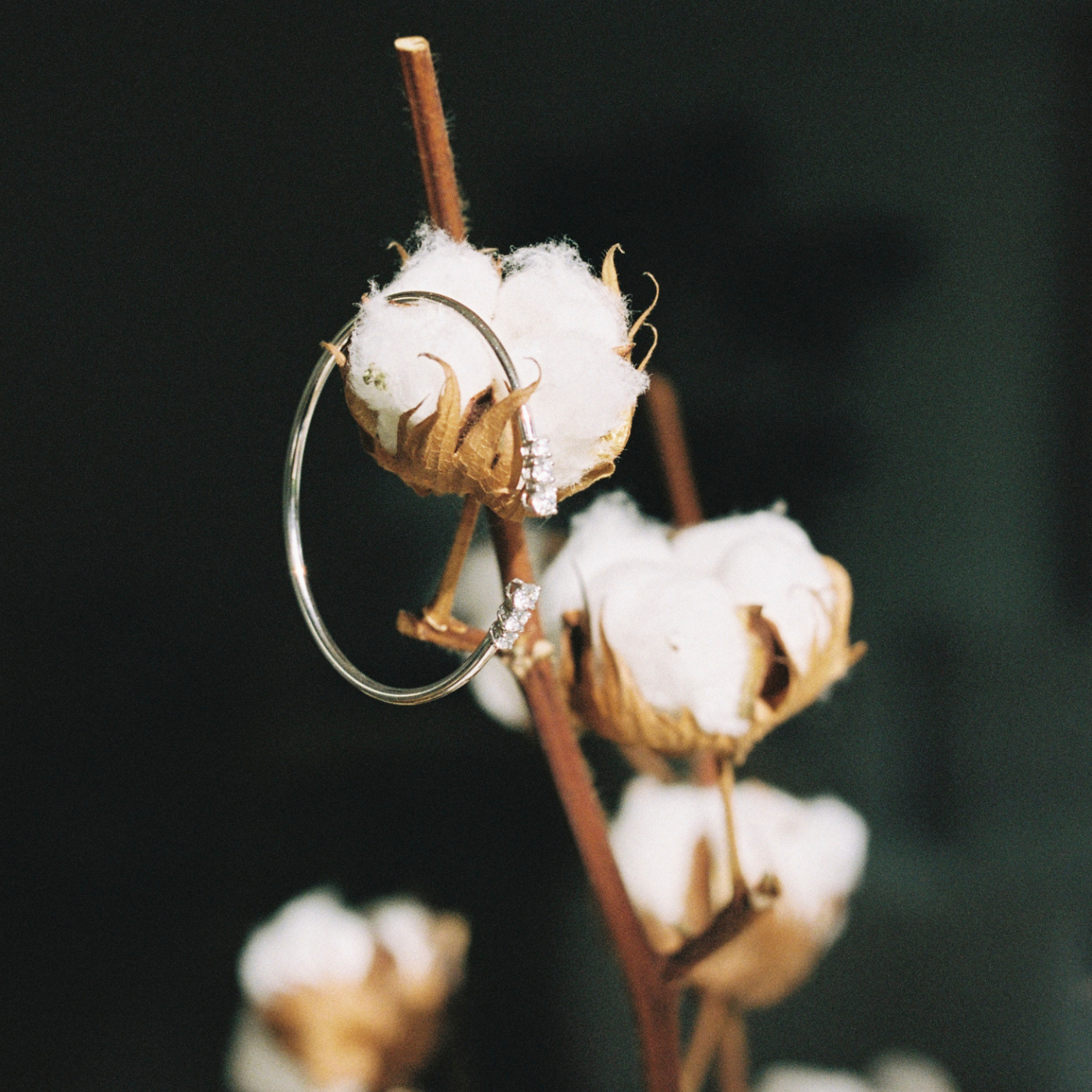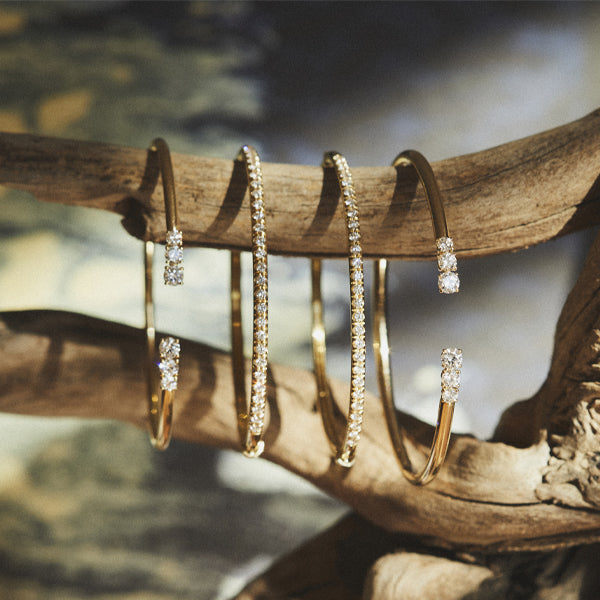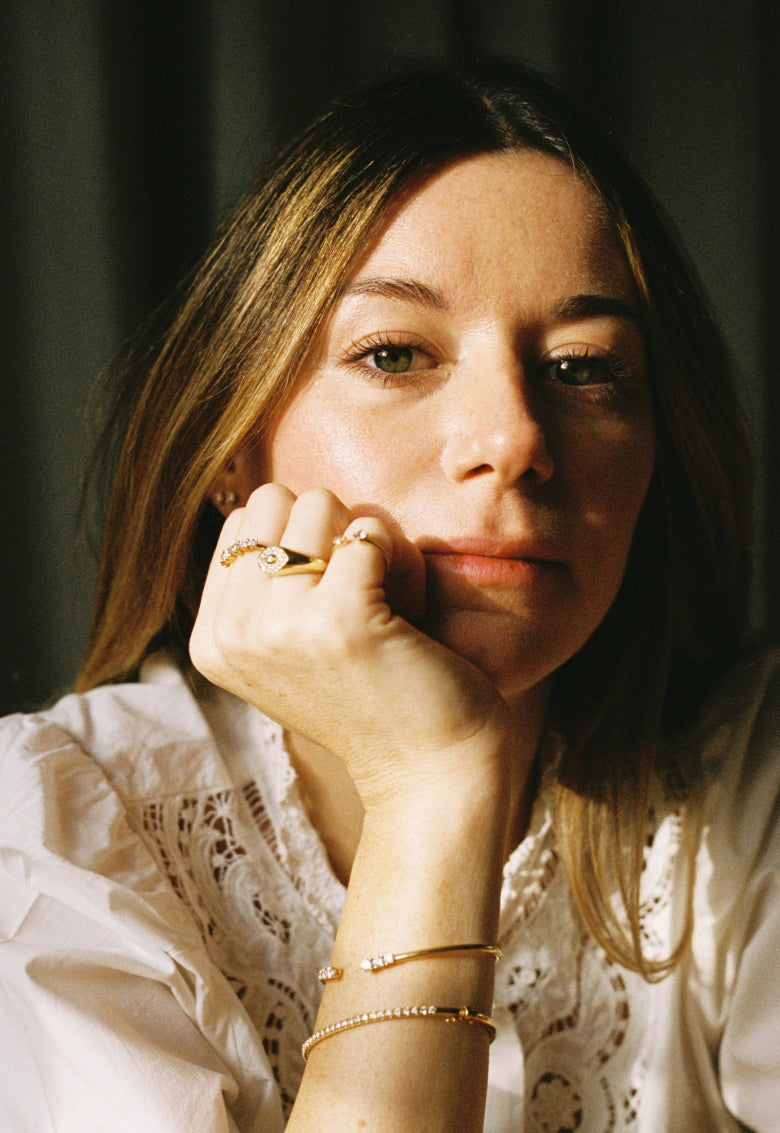Sustainable jewelry is made using responsibly sourced materials that don’t negatively impact the planet or its people. That's why we at HANAN MOSER create fine jewelry using lab-grown diamonds, choosing to take power back from the traditional natural diamond monopoly and place it in our shopper’s hands. We also use recycled 18k gold in all of our pieces, manufacturing in a small family-run factory in Italy to ensure workers are paid a fair wage. However, despite the overwhelming evidence that sustainable jewelry is better for the earth, there are still a few common misconceptions. That’s why we’re debunking these myths to support you on your conscious journey.
Myth 1: Sustainable jewelry is expensive
There is some truth behind this myth, but for a good reason! Sustainable fashion and jewelry are often more expensive because of the time it takes to source eco-friendly, quality materials. This higher price also allows for the payment of fair wages to workers. In contrast, fast fashion items are only produced at low prices because of the lack of transparency in the chain. For example, because there is unfair pay, unethical working standards, and poor quality materials. Because of this, it’s always better to buy sustainable jewelry at a higher price, investing in beautiful pieces that do good for the earth.
At HANAN MOSER, we choose higher production costs so that we can deal directly with a family-run, ethical, and sustainable manufacturer. However, we also use lab-grown diamonds for our jewelry, a much more reasonably priced material than natural diamonds. They’re also better for the environment and its people - bonus! Overall, this means buying sustainable jewelry from HANAN MOSER can work out at a lower cost than traditional natural diamond jewelry (a monopoly associated with conflict and ambiguous trading standards).
Learn more about our sustainability efforts
Myth 2: Sustainable jewelry is poor quality and unfashionable
For those with a minimal and classic sense of style, there is often the myth that sustainable jewelry isn't fashionable. That’s because the word “sustainability” is often synonymous with hippy, earthy trends, and the use of natural materials like wood or precious stones. However, as we become educated about the perils of fast fashion, more brands are coming up with fresh and on-trend sustainable styles. At HANAN MOSER, we design our sustainable jewelry in line with timeless trends so that you can still have the luxury you deserve while doing good for planet earth.
We also use the highest quality materials to ensure that the pieces will last forever, meaning you won’t have to buy over and over again as you do with fast fashion.
Did you know? Lab-grown diamonds are just as durable as their natural counterparts, grown to last a lifetime.
Myth 3: Lab-grown diamonds aren't ‘real’ diamonds
We’re here to tell you that lab-grown diamonds are the same as natural diamonds, chemically, physically, and aesthetically! The difference is that lab-grown diamonds are grown in a laboratory using two processes called HTHT and CVD. During these processes, scientists heat a diamond seed at extreme temperatures to turn it into a fully grown diamond. When it’s finished, experts are unable to tell the difference between natural and lab-grown diamonds. At HANAN MOSER, we source our diamonds from a carbon-neutral supplier, which means they are entirely ethical and sustainable. In contrast, natural diamonds are mined from the depths of the earth, using a vast amount of fossil fuels and water. The mining area also displaces communities and damages land. By choosing lab-grown diamonds, you take conscious steps to do good for the planet.

We’re here to tell you that lab-grown diamonds are the same as natural diamonds, chemically, physically, and aesthetically! The difference is that lab-grown diamonds are grown in a laboratory using two processes called HPHT and CVD. During these processes, scientists heat a diamond seed at extreme temperatures to turn it into a fully grown diamond. When it’s finished, experts are unable to tell the difference between natural and lab-grown diamonds.
At HANAN MOSER, we source our diamonds from a carbon-neutral supplier, which means they are entirely ethical and sustainable. In contrast, natural diamonds are mined from the depths of the earth, using a vast amount of fossil fuels and water. The mining area also displaces communities and damages land. By choosing lab-grown diamonds, you take conscious steps to do good for the planet.
Myth 4: Responsibly sourced jewelry isn’t as varied
As seasonal trends come and go, fast fashion thrives. As a society, big brands encourage us to stay on-trend, discarding our items in favor of the next season. To combat this, we design our sustainable jewelry in classic, forever-loved designs that will always be in style. However, we continue to design a range of pieces using our future-first mindset. For example, we source colored lab-grown gemstones, so you can have just as much variety in the styles you love. We also choose to use a made-to-order approach, so you can purchase without contributing to waste from mass production.
Myth 5: Lab-grown diamonds aren’t certified
False! Lab-grown diamonds are certified, just the same as natural diamonds. This ensures the transparency of the production chain, resulting in you receiving the highest-quality diamond sustainable jewelry. It also means you can check the certification for important characteristics like cut, clarity, color, and size. At HANAN MOSER, this certification is just another way to provide a completely traceable shopping experience, directly from the lab to our manufacturer.
At HANAN MOSER, we hope to inspire you to find beauty in every moment, whether that’s the colors of the early morning sky, a smile from a passer-by, or the way the light catches the twinkle of your ring. It’s this that reminds us how lucky we are to have our beautiful planet, full of incredible wildlife and extraordinary communities of humans. We hope that by embracing a sustainable journey, we can go on a journey of healing and preservation that guarantees a better future for all living things.


